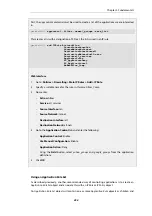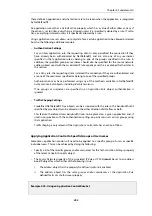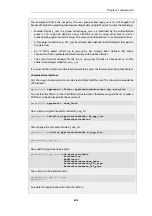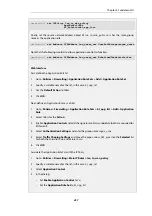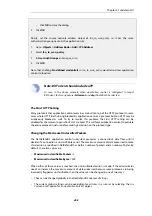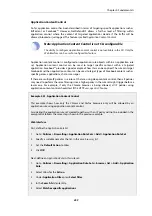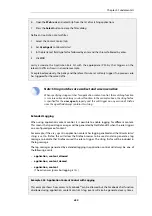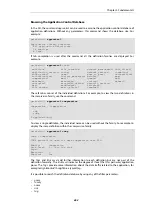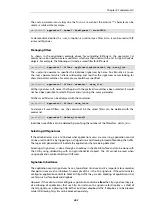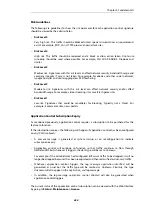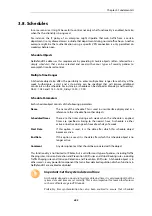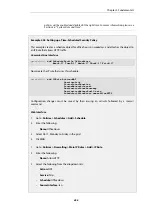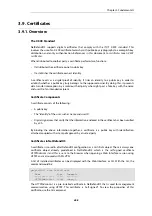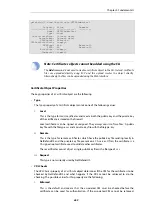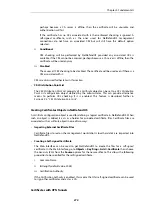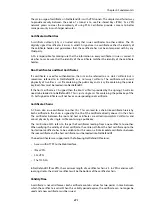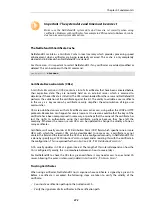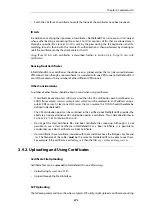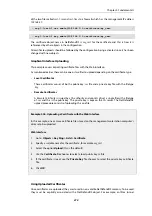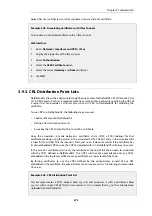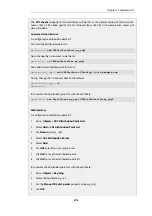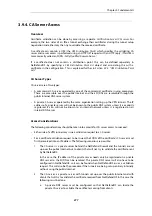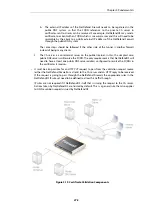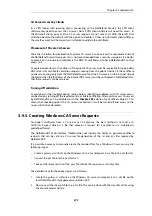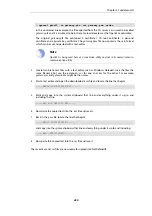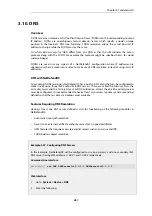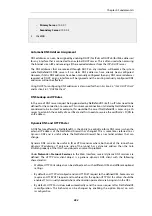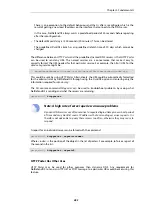
3.9. Certificates
3.9.1. Overview
The X.509 Standard
NetDefendOS supports digital certificates that comply with the ITU-T X.509 standard. This
involves the use of an X.509 certificate hierarchy with public-key cryptography to accomplish key
distribution and entity authentication. References in this document to
certificates
mean
X.509
certificates
.
When distributed to another party, a certificate performs two functions:
•
It distributes the certificate owner's public key.
•
It establishes the certificate owner's identity.
A certificate acts as a digital proof of identity. It links an identity to a public key in order to
establish whether a public key truly belongs to the supposed owner. By doing this, it prevents
data transfer interception by a malicious third-party who might post a fake key with the name
and user ID of an intended recipient.
Certificate Components
A certificate consists of the following:
•
A public key.
•
The "identity" of the user, such as name and user ID.
•
Digital signatures that verify that the information enclosed in the certificate has been verified
by a CA.
By binding the above information together, a certificate is a public key with identification
attached, coupled with a stamp of approval by a trusted party.
Certificates in NetDefendOS
A certificate is stored in a NetDefendOS configuration as a
Certificate
object. There is always one
certificate object already predefined in NetDefendOS which is the self-signed certificate
HTTPSAdminCert
and this is sent to the browser when opening a Web Interface session using
HTTPS and is also used with SSL VPN.
A list of installed certificates can be displayed with the Web Interface or CLI. With the CLI, the
command would be:
gw-world:/> show Certificate
Name
Type
Comments
--------------
-----
--------
HTTPSAdminCert
Local
<empty>
The
HTTPSAdminCert
is a pre-installed certificate in NetDefendOS that is used for management
communication using HTTPS. This certificate is "self-signed". To view the properties of this
certificate, use the CLI command:
Chapter 3: Fundamentals
268
Summary of Contents for NetDefendOS
Page 30: ...Figure 1 3 Packet Flow Schematic Part III Chapter 1 NetDefendOS Overview 30 ...
Page 32: ...Chapter 1 NetDefendOS Overview 32 ...
Page 144: ...Chapter 2 Management and Maintenance 144 ...
Page 284: ...Chapter 3 Fundamentals 284 ...
Page 392: ...Chapter 4 Routing 392 ...
Page 419: ... Host 2001 DB8 1 MAC 00 90 12 13 14 15 5 Click OK Chapter 5 DHCP Services 419 ...
Page 420: ...Chapter 5 DHCP Services 420 ...
Page 573: ...Chapter 6 Security Mechanisms 573 ...
Page 607: ...Chapter 7 Address Translation 607 ...
Page 666: ...Chapter 8 User Authentication 666 ...
Page 775: ...Chapter 9 VPN 775 ...
Page 819: ...Chapter 10 Traffic Management 819 ...
Page 842: ...Chapter 11 High Availability 842 ...
Page 866: ...Default Enabled Chapter 13 Advanced Settings 866 ...
Page 879: ...Chapter 13 Advanced Settings 879 ...

